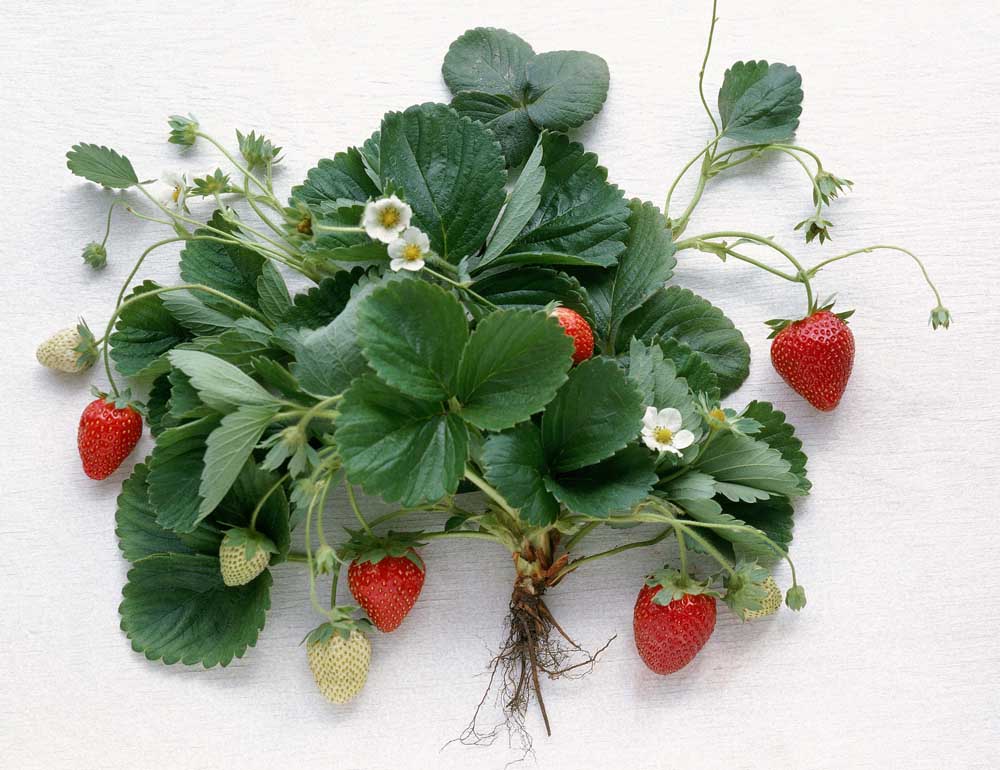Know your strawberries
Published 12:00 am Tuesday, July 1, 2014

- Thinkstock
Many years ago, early in my married life, my mother cross-stitched and framed a saying that she felt applied to me. The piece read, “The hurrier I go, the behinder I get.” As the years pass, I realize how true those words are.
I have a penchant for seed starting, which usually begins the last of March and continues on through May. When I should be outside cleaning up and preparing for the season, I’m still standing over heat mats and fluorescent lights chanting a mantra of “Grow, baby, grow.”
As I reached into the freezer a month ago and pulled out the last of the strawberries to use in a smoothie, I had one of those “Oh, darn” moments. I realized I hadn’t cleaned up the berry patch. Plus troubles with the irrigation system meant the plants hadn’t received proper watering.
I’m happy to relate the beds survived despite my neglect, and within a few hours of bended knees, the patch looked ready to set some blossoms. I thanked them profusely and promised to be more mindful of their care if they would just please provide me with another year of sweetness for my smoothies.
My strawberry bed is in the day-neutral classification, and I’m ashamed to admit I don’t know the variety. The variety has a long lineage of being shared with friends who then share with more friends, and each friend probably names his or her plants after the generous friend who provided them.
There are three classes of strawberries.
• June-bearing plants produce one crop in early June or July. Hood, Totem, Benton and Earliglow are June-bearing and the ones you would cultivate if you want a crop for jam-making.
• Ever-bearing plants produce two crops, one in June or July and then again in the fall. Quinault was developed in Washington and does well in cooler states. Fort Laramie is also an ever-bearing variety.
• Day-neutral plants are comparatively new to strawberry culture. Day-neutrals are not as sensitive to the summer daylight that cuts off production of June-bearers. Although the day-neutral are generally smaller than June-bearing, their output lasts months longer with a final yield often surpassing the June-bearing varieties.
During the 1970s, Royce Bringhurst, of University of California, Davis, pioneered the development of day-neutrals. Recalling the wild Rocky Mountain strawberry of his childhood in Utah, he returned to the Wasatch Mountains and collected some plants. Bringhurst back-crossed the plants he dug into breeding lines until he developed commercially acceptable stock that would produce fruit all summer just as the mountain berries did.
The work was then further developed by a team from the U.S. Department of Agriculture and Harry Swartz of the University of Maryland. This group of breeders introduced the Tribute and Tristar day-neutral strawberries in 1981. The berries were prefixed with a “Tri” to indicate the yield of the fruit extended to three of the four seasons.
As we know in gardening, especially in Central Oregon, there are no hard and true facts, so use the following information as a guideline.
Generally, day-neutral berry ripening in the spring last about 30 days from open flower to mature fruit. As temperatures rise, the ripening time drops to 21 to 23 days from first flower to mature fruit. As temperatures cool in the fall, the maturation time increases to 45 to 50 days.
The recommendations from Cornell University are that day-neutrals prefer a slow, steady feeding of nitrogen. Add compost, well-rotted cow manure or fish emulsion every two weeks or so throughout the growing season. Work a moderate amount into the top layer of soil. All strawberries require full sun and 1 inch of water per week. Pinch off runners throughout the season so the plants will concentrate on berry production, not the production of daughter plants.
With continuous production throughout the season, eating strawberries are considered a luscious, tasty prescription for health. Strawberries are a good source of soluble dietary fiber. One cup of whole strawberries provides 45 calories and 140 percent of the U.S. recommended daily values for vitamin C, 20 percent of vitamin K, 12 percent of manganese and 7 percent for potassium.
It would be against my better judgment to list a caloric analysis of strawberry shortcake — after all it is summer, and we deserve a few special treats.
— Reporter: douville@bendbroadband.com








